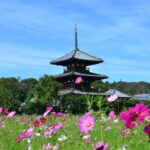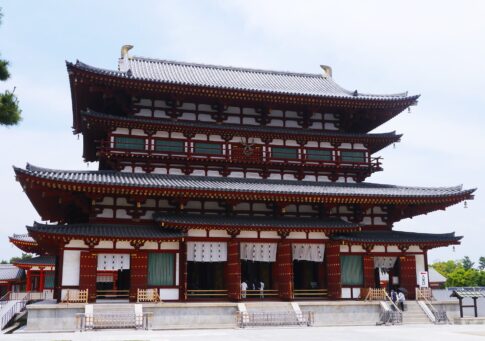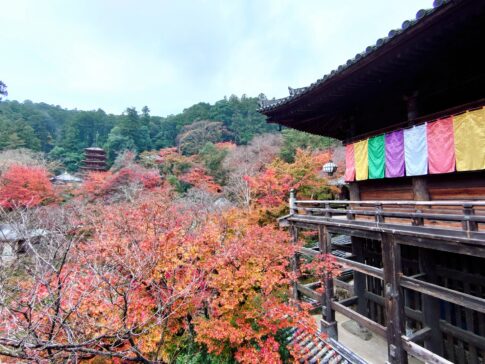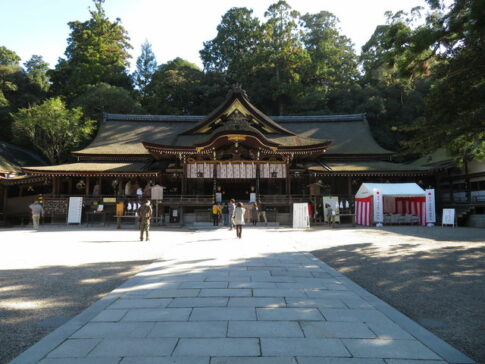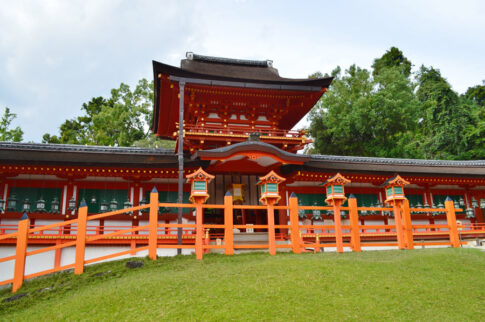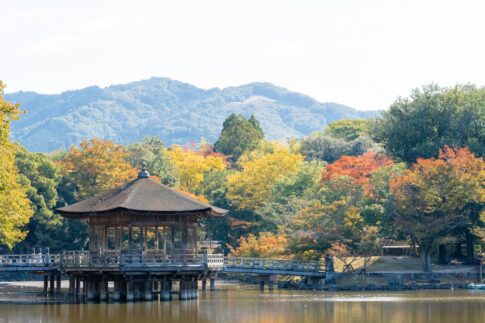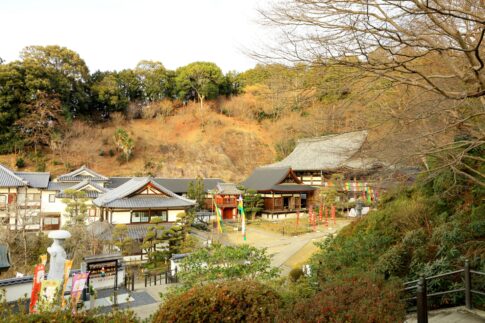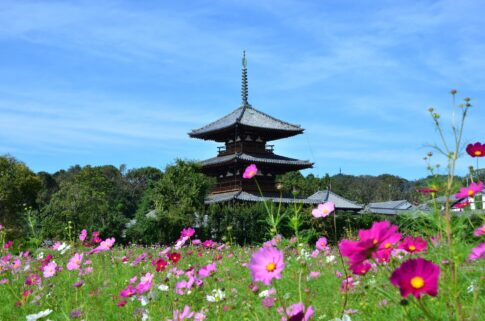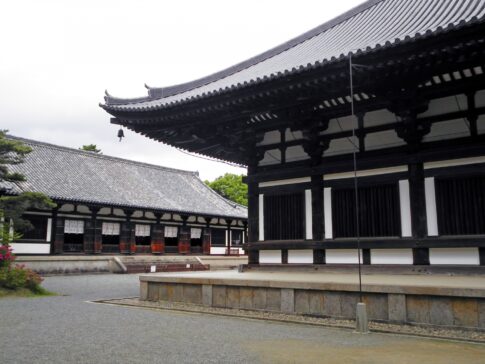As the old capital of Japan, Nara has a lot of tourist attractions including historical sites such as temples, shrines and ruins.
Among them, the Todaiji temple attracts most visitors with its history and dazzling architecture.
Located in the centre of Nara, it is a must-see sightseeing spot not only for historians but for anyone who wants to immerse themselves in a historic experience.
What is the Todaiji Temple?

The Todaiji temple is a Buddhist temple founded by Emperor Shōmu in 738.
It consists of several halls (殿 den) with the largest one being the Great Buddha Hall (大仏殿 Daibutsuden), which measures 57 metres (187 ft) long, 50 metres (160 ft) wide and 49 metres (161 ft) high.
The Great Buddha Hall, often called the main hall, houses the world’s largest bronze statue of the Buddha Vairocana, known in Japanese as Daibutsu (大仏), who is worshipped by Japanese Buddhists.
The main hall is one of the biggest wooden structures in the world, although it has become smaller than its predecessor after several reconstructions.
Due to its historical significance, the Todaiji temple is also listed as one of the “Historic Monuments of Ancient Nara” in the UNESCO World Heritage Site list, along with seven other historical sites in Nara.
The temple is also home to a number of Japanese national treasures and other valuable items such as relics, statues, ceramics, masks, textiles and other sacred art objects, many of which are only available to view on request or at specific times.
The Todaiji temple is also a popular destination for a school trip in Japan.
As a part of a field trip in Nara, the temple is visited not only by local students but by students from all over the country.
Since the temple is located within the famous deer park (Nara Park), visitors may also come across wild deer along the way.
It is a Buddhist temple but people of all religions are welcomed and there is no need to pray when going through the gates or entering the halls.
The Todaiji temple itself contains a number of halls, gates, towers and other buildings within its grounds, but it is also surrounded by some other temples and museums related to Buddhism.
What to see at the Todaiji Temple?

Todaiji is a very large complex containing a number of attractions, so the visitors are advised to have a map or a guidebook at hand so as not to miss out anything.
Those who do not have enough time to see everything may focus on the main hall.
For reference, I recommends the following route which takes up to 5 hours to finish: the Nandai-mon Gate – the Daibutsu-den Hall – the Belfry – the Shunjo-do Hall – the Sammai-do Hall (Shigatsu-do) – the Hokke-do Hall (Sangatsu-do) – the Kaisan-do Hall – the Nigatsu-do Hall – the Tegai-mon Gate – the Kaiden-in.
The main attraction of the Todaiji temple is The Great Buddha in the main hall.
This bronze statue has an astonishing height of 14.98 m (49 ft 2 in) and weighs about 500 tonnes.
The statue was first built in the 8th century, but it has been re-cast several times due to several fires and earthquakes.
Today, most of the Great Buddha is re-cast while little remains of the original statue.
As an artwork, the Great Buddha is considered a masterpiece of Tempyo Period (729-764) art, and it has continually been studied by Japanese historians and scholars.
Another attraction at the Todaiji Temple is Nio, the two 8.5-metre-tall (28 ft) muscular wrestler-like figures guarding the Nandaimon gate.
Also called Kongō Rikishi, the Nio were made around the 12th century, reportedly under the directions of sculptors Unkei and Kaikei.
These guardians are known as Agyo and Ungyo, and they are housed within the gate in order to protect them from the weather.
One of the major differences between Agyo and Ungyo is their facial expressions: Angyo has its mouth open whereas Ungyo’s mouth is tightly closed.
This is because Agyo is uttering the sound “ah”, which is said to represent birth in Buddhism. Ungyo, on the other hand, is uttering the sound “un”, representing death.
The Todaiji temple also hosts seasonal events throughout the year.
Beautiful flowers can also be found within the temple: Japanese Lily-of-the-Valley and Crepe-myrtle are in bloom between February-March and July-September respectively.
Special openings are held on October 5th, December 16th and July 5th, with each featuring different statues that are usually stored for safekeeping.
In observance of the Japanese New Year’s traditions, the upper doors to the main hall, in from of the face of the Great Buddha, are opened on New Year’s Eve and New Year’s Day so that visitors can pray to the Buddha from the outside of the hall.
How to access the Todaiji Temple?

The Todaiji temple is in walking distance from the centre of Nara.
It is a 30-minute walk from the Kintetsu Nara station, and 45 minutes away from the JR Nara station.
Visitors may also take the Nara Kotsu bus lines and get off at Todaiji Daibutsuden bus stop to access the temple.
The bus lines running to the temple are: the yellow Nara City Loop Line Bus #2, 70, 72, 97 and 160.
There is an entry fee of 600 yen for adults and 300 yen for elementary school students, as well as group fees that range between 200-550 yen for 30 people or more.
Summary
For those who want to visit Nara, the Todaiji temple offers a perfect time-travel journey back in ancient Japan.
It is a spectacular landmark in Nara with its history and breathtaking architecture continuing to attract people for more than 1,000 years.
Together with the adorable deer, the Todaiji temple is part of the peaceful scenery of the Nara Park that has been visited by countless people every year.

